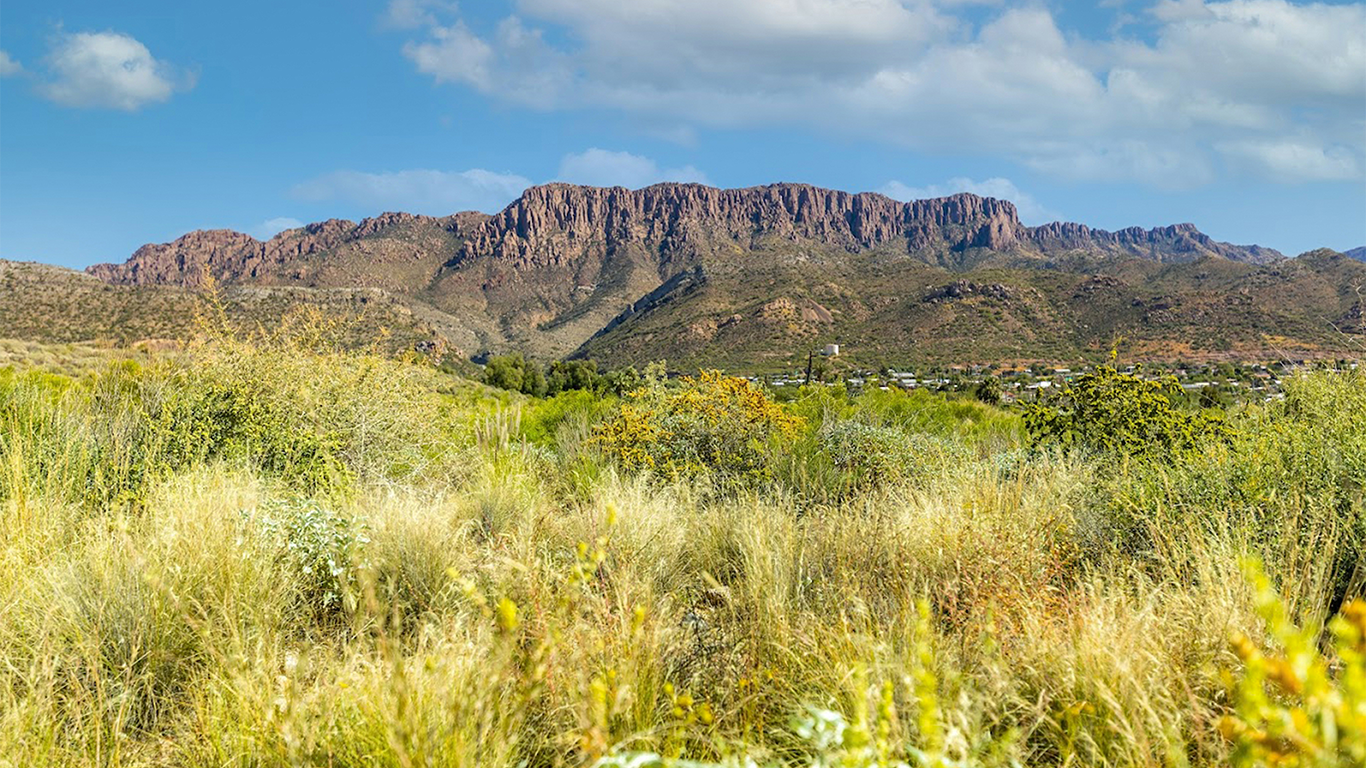Ask an industry expert what they think sustainable mining means and you’ll likely receive varied answers. Depending on the field and subject-matter expertise, sustainability could center on reducing waste, land reclamation, biodiversity conservation, low-impact mining techniques, reducing greenhouse gas emissions or technological innovations (as examples).
While the definition of sustainable mining practices may differ based on the lens an expert looks through, most mining industry leaders share a unified commitment to doing what it takes to keep researching, implementing and collaborating on best sustainability practices.
MORE NEWS: Phoenix bucket list: 25 things you must do
INDUSTRY INSIGHTS: Want more news like this? Get our free newsletter here
Mining sustainability background
When most people think of sustainable mining, they view it as the practice of extracting resources while minimizing environmental impact and improving social and economic outcomes. Some sustainable mining practices include:
• Using renewable energy: Mines can use solar, wind or hydroelectric power to reduce greenhouse gas emissions.
• Water management: Mines can recycle and treat wastewater to prevent local water depletion.
• Using eco-friendly equipment: Mines can use electric-powered trucks, loaders and excavators.
• Using lower-impact mining techniques: Mines can use in-situ, selective or solution mining.
• Leaving mine sites reusable: Mines can leave the site in a condition that can be reused by humans and ecosystems.
Sustainable mining is important because the mining industry is critical for global development, but traditional mining practices can have significant environmental impacts.
Sustainability in mining became more front and center in the U.S. with initiatives like the Surface Mining Control and Reclamation Act (SMCRA) of 1977. The passing of this legislation introduced stringent requirements for restoring land after mining activities and promoted environmental stewardship and community well-being.
Today, sustainability in U.S. mining operations have grown tenfold from environmental and social governance (ESG) standards to the adoption of eco-friendly technologies and more.
Sustainability in action
As mentioned earlier, mining sustainability encompasses wide and diverse practices from methods of protecting ecosystems by minimizing land degradation and water contamination to preserving biodiversity, mitigating climate change through the use of renewable energy, reducing greenhouse gas emissions and efficiency in recycling and lowering environmental strain. These implementations and more are being researched and adopted by local universities, mining operations and other mining stakeholders in a myriad of ways.
A look at in-situ copper recovery (ISCR)
In-situ recovery (ISR) involves extracting minerals directly from underground deposits and is considered a more environmentally friendly process compared to traditional mining, resulting in minimal surface disruption and reduced waste.
“Florence Copper’s innovative and proven in-situ copper recovery (ISCR) process delivers significant environmental benefits, setting a new standard for sustainability in the mining industry,” says Sophie Dessart, manager of communications and public affairs of Florence Copper.
Dessart explains that rather than extracting and processing vast amounts of mineralized rock, Florence Copper’s innovative ISCR process dissolves copper minerals underground. “The resulting copper-rich solution is pumped to the surface through a series of wells and then processed on-site into pure copper cathode sheets,” she says. “ISCR is only possible due to very specific hydrogeologic conditions that we are fortunate to have in Florence, Arizona.”
Added benefits of ISCR include significantly less disruption to the land as well as reduced water use, energy consumption and carbon emissions.
Compared to conventional open-pit copper mines in Arizona, Florence Copper’s ISCR technology is forecast to produce 75% fewer carbon emissions, use 65% less energy and consume 78% less water per pound of copper produced.
“Florence Copper is expected to be the lowest greenhouse gas and energy-intensive copper producer in all North America and one of the lowest in the world during commercial operations,” Dessart says.
Florence Copper’s property will closely resemble its current state and can be repurposed for various future uses, such as parkland, residential development, manufacturing or a return to its natural desert landscape at the close of the ISCR process.
“We expect first copper production from our expanded commercial facility at the end of this year and will have a production capacity of 85 million pounds of copper each year for 22 years,” Dessart says. “Ultimately, Florence Copper is well positioned to be the next major sustainable copper producer in the U.S.”
Land and mine reclamation
“I look at sustainability and mining in terms of land recovery and reclamation,” says Julie Neilson, research professor emerita of environmental science and assistant director of the Center for Environmentally Sustainable Mining (CESM) for the University of Arizona (U of A). “If you destroy the land and you don’t bring it back into production [after closing out the mine], you’ve lost an important resource in terms of the natural beauty of the desert and carbon sequestration potential.”
Neilson, who for more than a decade has researched sustainability and land reclamation with her U of A cohorts at CESM, works with a broad collaborative network of mining operations experts and stakeholders to explore mining sustainability to reclaim land.
“We look at how we can prevent these huge tailings dams and waste rock piles [produced in mining],” Neilson says. “And while not all of these ideas are ready to be used, questions are being asked such as ‘Could tailings be added to cement, for example, as an additive’ or ‘Can dry-stack tailings be used in the tunnels to backfill once a mining project is complete?’”
Dry-stack tailings, an advanced method of tailings management that involves dewatering mining waste to create a dry or semi-dry “cake,” eliminates the need for traditional tailings dams and reduces the risks associated with dam failures. It also encourages water conservation but comes with higher initial costs due to the equipment and energy needed for filtration and compaction.
As the technology for more advanced — and often costly — systems continues to undergo refinement, mining operations continue to invest what they can to stimulate land reclamation systems that are both cost-effective and results-driven.
Efforts pay off
Resolution Copper’s land reclamation efforts have included a voluntary investment of approximately $75 million over 15 years to restore 475 acres of the old Magma Copper West Plant. “As a result of our reclamation efforts, an area that formerly stored mine tailings is now home to thriving native vegetation and wildlife,” says Tyson Nansel, principal advisor for communications at Resolution Copper.
Resolution Copper also has and continues its concerted efforts to reduce water usage across its operations, minimizing evaporation and reusing and recycling water whenever possible.
“We have already stored enough water to sustain our operations, assuming maximum production for more than half the mine’s operating life,” Nansel says. “And the Environmental Impact Statement published by the U.S. Forest Service demonstrates an adequate water supply for all cumulative uses for the next 100 years.”
Nansel explains that in the process of Resolution Copper digging, the water removed from 7,000 feet below the ground in bedrock goes through an on-site treatment process and is then sent to an irrigation district where farmers use it to grow crops. “By beneficially using our treated water, farmers pump less, leaving more water in the ground,” he says. “Continuous monitoring ensures the water meets regulatory standards. Since 2009, Resolution Copper has provided approximately 7 billion gallons of water to local farmers.”
Additional mines throughout Arizona focus on energy and water conservation, including ASARCO, with 76% of water utilized in operations being reclaimed for reuse.
Where mining law intersects with sustainability approaches
Stuart S. Kimball, shareholder at Gallagher & Kennedy explains that Arizona’s regulations have evolved based on recent statutory changes at the Arizona Legislature. “Those statutory changes have sought to provide more flexibility in how Arizona companies achieve the same environmental standards,” he says. “This has allowed Arizona companies to adopt new technologies and processes that reduce the amount of wastes and also promotes recycling.”
Gallagher & Kennedy has been in the forefront of negotiating the statutory changes Kimball references, that ensure responsible environmental stewardship acceptable to both government entities and Arizona’s businesses. Once the statutes are passed, Gallagher & Kennedy works with government agencies to modify the regulations and encourage Arizona businesses to become more sustainable, which is not only more cost-effective but ensures environmental compliance.
“Given the increasing reliance on domestic mineral resources to drive the economy, it’s imperative that the regulatory framework not only allow but actually encourage, businesses to invest and utilize advanced technologies that can achieve the environmental standards,” Kimball says. “The Arizona Legislature continues to look for changes that remove existing barriers that discourage or prohibit advanced technology to meet the same environmental standards. Everyone benefits when more cost-effective technologies can be adopted to make mining more sustainable and equally protective.”
The future of mining sustainability
The practices of mining sustainability discussed here are only a micro view of the innovative and technological applications taking place today. Key to the future of sustainability processes is looking to the past — what Nielson explains is “concurrent reclamation.”
“Concurrent reclamation occurs from the moment a mine starts development to coincide with a reclamation plan,” she says.
Kimball adds, “Early planning allows for the mines and the government agencies to make decisions today to ensure reasonable and cost-effective achievement of future land reclamation.”
Resolution Copper’s example of concurrent reclamation is the reclamation work already undertaken at the West Plant site, where legacy tailings have been removed and portions of the land have been restored.
“The federal environmental impact review has been ongoing for more than eight years,” Nansel says, “making this one of the most thoroughly analyzed mining projects in the country. Through collaboration and consultation, the collective voices of Tribes and local communities have reshaped the project to reflect shared values, ensuring it is developed responsibly and sustainably.”
Keeping it green
Members of the Arizona Mining Association value good stewardship of the natural environment. They recognize the significance of producing metals for our society’s modern living, emerging technological advancements, and energy evolution while minimizing environmental impacts during the mining process. Thousands of mining industry workers and their families reside in Arizona and are committed to operating sustainably in the communities where they work and live. Here’s what some Arizona organizations are doing to protect our state’s environment:
Asarco: “In a world of constant change, characterized by urgent social, environmental and economic challenges, we believe it is essential to have a comprehensive and long-term vision of sustainability to align the company’s strategy to face these challenges.”
Capstone Copper: “Environmental compliance is a key component of our business approach. Our environment, health, safety and sustainability policy defines our commitment to continuously improve our environmental performance, establish environmental programs and operate in compliance with applicable legislation as minimum requirements.”
Florence Copper: “Florence Copper is committed to achieving high levels of environmental protection and conservation. We operate under stringent local, state and federal regulations to ensure our operations protect and preserve the local environment and natural resources.”
Freeport-McMoRan: “At the core of our business are the extraordinary people who focus on safe production while helping to improve the sustainability of areas near our operations. This means we operate a business that upholds and respects human rights while working with our stakeholders on the fundamental environmental, social and economic aspects of our sustainability programs.”
Resolution Copper: “At Resolution Copper, we’re committed to responsible development and believe developing Arizona’s natural resources can and must coexist with the environment and our area’s rich and treasured heritage. We’re planning the project — and building partnerships — to reduce the impact mining can have and make sure our environment, communities and unique culture continue to thrive.”




